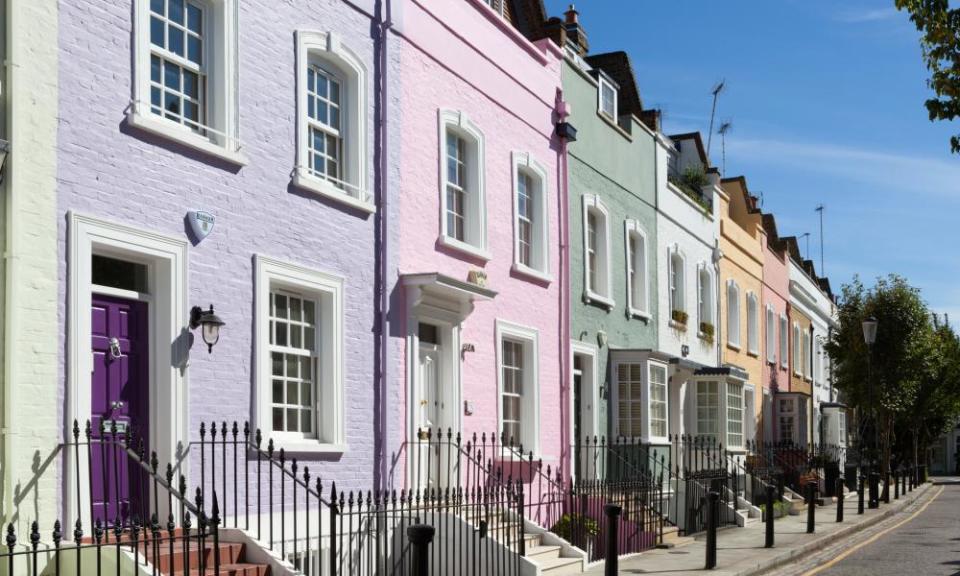Average London house price exceeds £500,000 for first time

The average price of a property in London broke through the £500,000 barrier for the first time, official figures for November show, with pent-up demand from lockdowns, a change in the types of homes being bought and two tax deadlines all fuelling the market.
In its monthly snapshot of the market – based on sales registered last November – the Office for National Statistics (ONS) showed that the average price of a home in London was up by 9.7%, to a record of £514,000.
Related: Home buyers face unexpected tax bill when stamp duty kicks in
The temporary break on stamp duty, which covers homes costing up to £500,000 in England, has led to a boom in sales and pushed up prices in properties that benefit from the largest saving.
The break will end on 31 March, and a day later a new surcharge for non-UK residents will be introduced.
Figures from the ONS suggest these imminent increases have helped fuel a boom in London prices, together with an increased demand for more spacious homes.
Within the capital, prices had risen most strongly in the upmarket borough of Kensington and Chelsea, which recorded annual growth of 28.6% and an average price of £1.5m.
The outer London borough of Brent also recorded growth in excess of 20% but the ONS said this partly reflected a decrease in prices between October and November 2019.
The ONS said: “Demand for property in inner London may be particularly responsive to temporary property tax changes as property prices are high and therefore so is the corresponding tax to be paid.
“In addition, compared with other regions of the UK, London has a relatively high proportion of properties bought for investment, including from cash buyers and overseas investors.”
The ONS figures showed the average price of a home in the UK was £250,000. Prices were up by 7.6% annually, which was the highest rate of growth since June 2016, when sales agreed in the run-up to the Brexit vote were recorded.
Yorkshire and the Humber also recorded an annual growth rate of 9.7%, taking the average price of a home in the region to £181,000.
The lowest level of growth was in the east of England, where prices increased by 4.8% over the year to an average of £303,000.
Property firms said the high level of activity in the market after the first coronavirus lockdown ended and the stamp duty holiday was announced in July had continued into the autumn months.
Bank of England figures for mortgage lending showed the number of loans approved reached a five-year high in December. These deals will not appear in ONS data until early this year.
Guy Gittins, the managing director of the London-based estate agency firm Chestertons, said: “The second lockdown no doubt encouraged some people to put their property search on hold but we didn’t notice a big difference, and activity levels were still a lot higher than we anticipated for this time of year.
“Part of this was driven by the incentive of the stamp duty saving but we believe the main driver was that people just wanted to move as quickly as possible while conditions were favourable.”
The firm said buyer registrations, viewings and offers in 2020 all reached levels last seen in 2012.

 Yahoo Finance
Yahoo Finance 